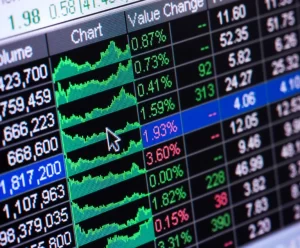7 Key Metrics for Assessing Trading Performance

Evaluating trading performance is essential for investors and traders alike to measure the success of their strategies and decisions. In a market environment full of risks and opportunities, it is necessary to comprehend the core metrics for analysing trading effectiveness and profitability.
7 Metrics Measuring Trading Performance
1. Return on Investment (ROI)
Return on investment (ROI) is a fundamental metric in trading evaluation, indicating a trading strategy or investment’s profitability over a specific period. It is calculated by dividing the net profit (or loss) by the initial investment and expressing the result as a percentage. A positive ROI indicates profitability, while a negative ROI signifies losses. Tracking ROI helps traders assess the overall effectiveness of their trades and compare different strategies based on their profitability.
2. Sharpe Ratio
The Sharpe Ratio is a risk-adjusted measure that evaluates the return of an investment relative to its risk. It considers the return generated and the volatility or risk involved in achieving a return. A higher Sharpe Ratio indicates a better risk-adjusted return, reflecting superior performance relative to the amount of risk taken. By incorporating risk into the evaluation process, the Sharpe Ratio provides a more nuanced perspective on trading performance beyond simple returns.
3. Maximum Drawdown
Maximum drawdown measures the largest peak-to-trough decline in the value of a trading account or investment portfolio over a specified period. It quantifies the extent of loss experienced during a losing streak, offering insights into the potential risk and volatility associated with a trading strategy. Minimising maximum drawdown is necessary for preserving capital and managing risk effectively. Traders often use this metric to assess the resilience of their strategies and set risk management parameters accordingly.
4. Win Rate
Win rate, also known as the percentage of winning trades, is a straightforward yet informative metric in trading evaluation. It represents the proportion of trades that result in profits relative to the total number of trades executed. A high win rate indicates a higher probability of success, while a low win rate suggests that the strategy may need refinement. Monitoring win rate helps traders assess the consistency and reliability of their trading approach over time.
ALSO READ: Unlocking Trading Strategies: Sell Stops, Buy Stops, Sell Limits, Buy Limits

5. Profit Factor
The profit factor is a ratio that measures the relationship between total profits and total losses generated by a trading strategy. It is calculated by dividing the total profits by the total losses, providing a quantitative assessment of the profitability and efficiency of the strategy. A profit factor greater than 1 indicates that the strategy generates more profits than losses, while a profit factor less than 1 signifies the opposite. Traders use this metric to evaluate the risk-reward profile of their trades and optimise their strategies for better profitability.
6. Risk of Ruin
Risk of ruin assesses the probability of depleting a trading account or experiencing a significant loss beyond recovery. It considers the capital at risk, the size of each trade, and the win rate of the trading strategy. By quantifying the likelihood of catastrophic losses, the risk of ruin helps traders manage their risk exposure and implement appropriate position sizing and risk management strategies to safeguard their capital.
7. Average Return per Trade
Average return per trade measures the average profit or loss generated per trade executed within a trading strategy. It provides insights into the effectiveness of individual trades and the overall profitability of the strategy. By analysing the average return per trade, traders can identify patterns, trends, and areas for improvement in their trading approach. This metric complements other performance indicators by focusing on the granularity of trade-level outcomes.
Conclusion
Assessing trading performance necessitates a thorough grasp of essential metrics such as profitability, risk, consistency, and efficiency. By analysing these metrics collectively, traders can acquire valuable perspectives on the efficacy of their strategies and make well-informed choices to enhance their trading performance. Trading performance’s ongoing monitoring and assessment are necessary for adjusting to changing market dynamics and attaining sustained success in trading pursuits.
Contact MPFunds to take control of your financial success today.







